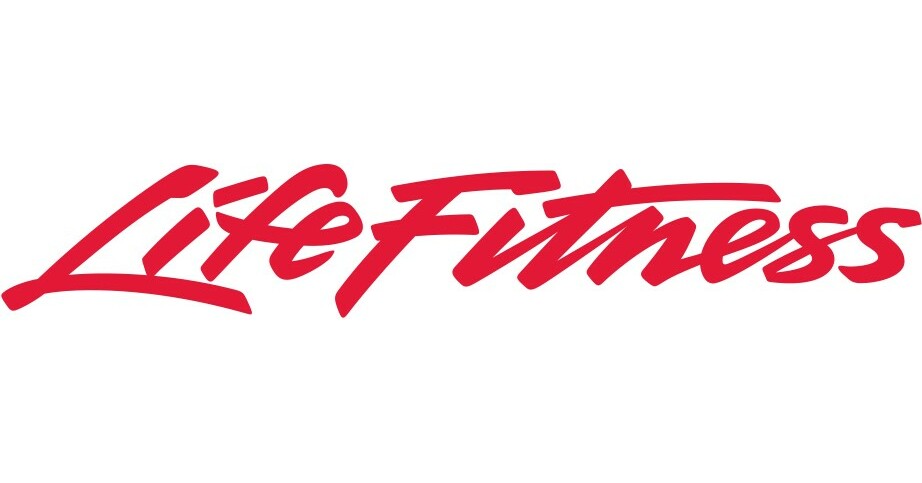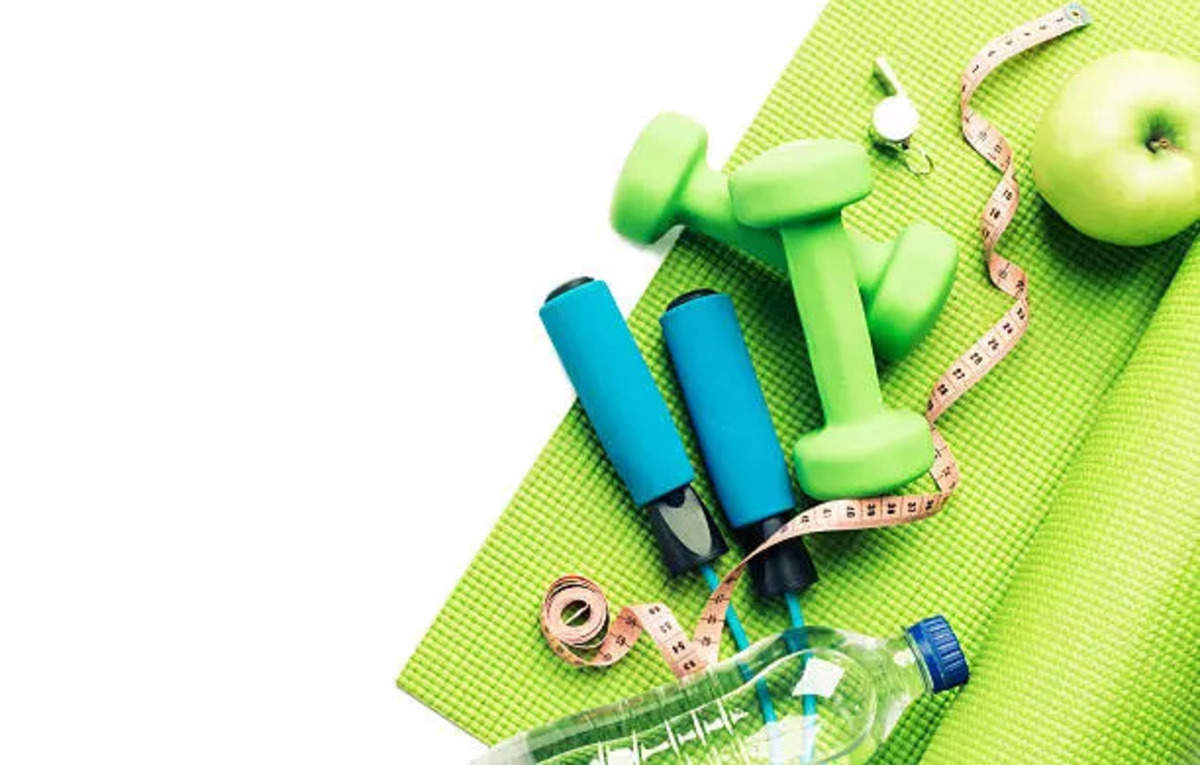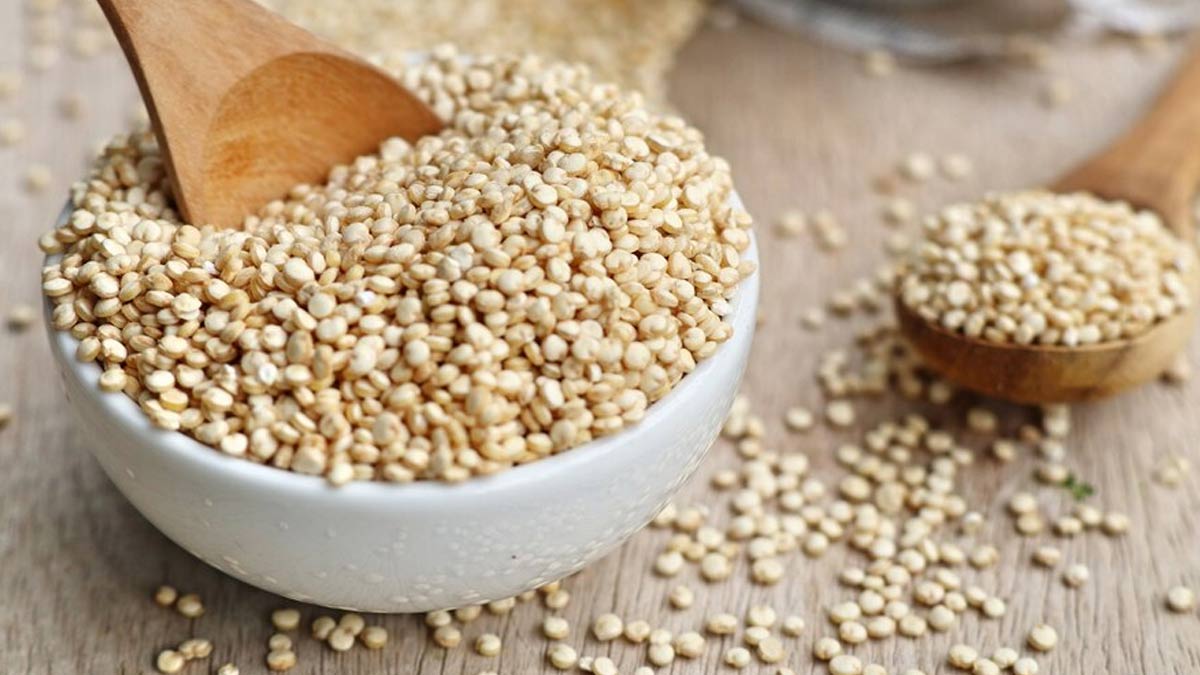Whether you call them lateral deltoids, side delts, or middle delts this muscle of the shoulder can make your upper body look strong and athletic. You need to start giving this muscle more attention if you want to develop proper 3D shoulders. In this post we will give you some tips on how to grow your side delts and provide you with 21 of the best lateral deltoid exercises. We’ll also give you pointers on how to deploy side delt exercises into your workout programming. Time’s a ticking so let’s get this show started…
Table of Contents:
- Anatomy and function of the deltoid muscle
- Benefits of strong side delts
- How to build strength and size in your lateral delts
- 21 best lateral deltoid exercises
- Tips and programming for side delts
- Lateral delt pain FAQs
- Stretches and myofascial release for lateral delts

DELTOID MUSCLE ANATOMY:
The deltoids are a triangular shaped muscle that sits over the shoulder. It gets its name from the Greek word delta as this letter is a triangle shape. It is comprised of three sections of muscle fibers or heads that are commonly thought of the shoulder muscles or the delts. Let’s have a high-level look at each deltoid and the roles they play in the human body:
- Anterior Deltoid or front deltoid: The front delt is located on the front of the shoulder and its main function is internal rotation of the shoulder joint and flexion and horizontal flexion. This deltoid is involved in many pushing chest exercise.
- Lateral deltoid or side deltoid: The side delt is found on the outer side of the shoulder and its main function is abduction of the shoulder joint thus making it possible to lift your arm up and out to the side. The lateral deltoid gives the shoulders a wide look which can help achieve the coveted tapered V silhouette .
- Posterior deltoid or rear deltoid: As the name suggests, the rear delt is found on the back of your shoulders opposite to the anterior deltoid the main function is external rotation of the shoulder joint, extension and horizontal extension.
WHAT’S THE FUNCTION OF THE LATERAL DELTOID?
The lateral deltoid’s main function is the abduction of the arm along the frontal plane. The lateral deltoid has a number of monikers including: lateral delt, side deltoid, lateral head of the deltoid, middle deltoid, medial deltoid, outer deltoid and side delt. As touched on before the main functions of the lateral deltoid are:
- Shoulder abduction when the shoulder is in internal rotation
- Shoulder flexion when the shoulder is in internal rotation
- Shoulder horizontal abduction when the shoulder is in external rotation
The lateral deltoid is located between the posterior deltoid and the anterior deltoid and lies over the insertions of the teres minor, supraspinatus and infraspinatus. The side delt starts at the acromion process (bony point at the end of the shoulder) on the scapula and inserts into the upper arm at the deltoid tuberosity (large prominence on a bone where muscles or ligaments are attached). The main difference in the muscle fiber of the lateral deltoid compared with the other deltoids are that it has multipennate (diagonal muscle fibers are in multiple rows) fiber orientation whereas the other two deltoids have parallel fiber.
Are your side delts weak and hard to grow?
At one time or another you might’ve searched online “how do I grow shoulders?”. That’s because the deltoids are one of more stubborn muscles when it comes to growth, especially the side delt and rear delt. The front delt is usually more developed than the other two deltoids because it’s involved in many pressing exercises. Genetics play one of the larger roles in how your delts look. However, you can definitely build strong side delts with the right training routine and nutrition.
BENEFITS OF STRONG WELL-BUILT SIDE DELTS:
Big strong, rounded shoulders have numerous benefits besides just looking good. The deltoids are amongst the most important muscles in the body as we use them in everyday life activities to push, pull and lift objects over our head. For the purpose of this post, we we’ll narrow it down to the benefits of having strong side delts.
- Reduced Risk of Injury: Many people experience shoulder pain or injuries at some point in their lives because the shoulders move through a large range of motion. Strengthening the side delts help to stabilize the shoulders which can help prevent future injuries.
- Improve Lifts: The lateral deltoids play a part in stabilizing the weight when performing bench press or overhead press. By working directly on the lateral deltoids there will be a transfer of strength to your other lifts.
-
Makes Upper Body Broader: One hallmark of someone who’s in shape is having wide toned shoulders. The lateral delts are on the outside of the shoulder so if you work on building them up so can change the look of your overall body. Wider shoulders contribute to making the waist look smaller too!
WHAT EXERCISES WORK THE LATERAL DELTS?
Exercises that move your arm up and away from your body directly target the side delts. We put together a list of exercises that hit the middle delts some are isolation and others compound exercises. Upright rows and their variations are good compound exercises that involve the side delts while a variety of lateral raises are great isolation exercises. In both cases you should be hyper-aware of the mind-muscle connection when doing these exercises otherwise you might injure yourself or perform the movement incorrectly thus reducing the effectiveness on the side delts.
HOW TO TARGET YOUR SIDE DELTOIDS FOR SIZE AND STRENGTH?
Luckily there have been some studies conducted to determine the best exercises to stimulate the various deltoid muscles. This study had subjects perform 5 reps of multiple shoulder exercises at 70% of their 1RM. The EMG data was collected for the concentric and eccentric phase of each lift. The results concluded that the 45-degree incline row and bent-arm lateral raise elicited the most muscle activation of the exercises tested.
Most people who lift have probably done their fair share of lateral raises to grow the side delts but people are often unaware that the traps frequently take away some of the tension off of the side delts. In the starting and ending portion of the lift is where most people engage their traps to help out the side delts. It’s paramount to isolate the side delts in order for them to grow. So, next time you’re doing lateral raises focus on using your side delts to lift the weights rather than the traps. To do this, keep your traps depressed and concentrate on moving the weight out to the side rather than focusing on moving the weight up.
BEST REP RANGES FOR SIDE DELTS:
The side delts are comprised of slightly more slow twitch muscle fibers than fast twitch muscle fibers. This equates to moderate to higher rep ranges of 6-20 reps to get the best results. The side delts don’t seem to respond that well to heavier weights at low rep ranges most likely because form starts to breakdown if lifting too heavy. It’s absolutely necessary to keep strict form if you want to hit the lateral deltoids properly as slight deviations from the correct range of motion and hand/arm positioning can remove the side delt’s involvement from completing the lift.
HOW OFTEN SHOULD YOU TRAIN SIDE DELTS?
You should directly train the side delts at least twice a week. Being that the side delts are often difficult to grow for many people, it’s important to target them with enough direct volume in your workout routine. You can choose 2-5 side delt exercises at least twice a week with sets ranging from 3-5 each session. Because the goal here is to grow the muscle, we want to train for hypertrophy so rep ranges should be in the neighborhood of 6-20 and sometimes even more up to 30 reps. Side delts recover quickly, you can try to increase the weekly volume to see how your body responds.
Related: How Many Exercises, Sets, and Reps Should I Do Per Muscle Group & Workout?
21 BEST LATERAL DELTOID EXERCISES
We compiled 21 of the best exercises to work the lateral deltoid. These middle delt exercises should be incorporated into your normal workout schedule. The side delts are a muscle that recover rather quickly so you should strive to work them at least twice weekly if you want to make any real progress. Keep in mind that you should always consult with your doctor before attempting new workout plans especially concerning shoulder exercises. Make sure to properly warm up before starting your workout and don’t try to overdo it.
The first 3 bodyweight side delt exercises are great as a dynamic warm up before you begin weighted the lateral delt exercises. The side delts will respond best to mid-high rep ranges, don’t let your ego get in your way. Many of the middle delt exercises below can be done with various equipment including dumbbells, cable machine, resistance bands, barbells and kettlebells.
1. Standing T Raise:
This is a good warm up exercise to get the blood flowing. You could use wrist weights or light weight dumbbells for a little added resistance.

How To:
- Get into an athletic position with your knees bent and hips hinged
- Lean forward slightly while your arms hang under your shoulders with your hands by your knees, palms facing towards you
- Lift your arms up and out to the side until they are shoulder level
- Slowly lower to starting position
- Repeat for desired reps
Note: Move arms in a controlled manner and pause at the top of the movement for added contraction.
Muscles Worked: Front Delts, Side Delts, Rear Delts, Traps, Serratus Anterior
2. Standing Y Raise:
Another great dynamic warmup exercise to increase the blood flow and circulation to the delts.

How To:
- Get into an athletic position with your knees bent and hips hinged
- Lean forward slightly while your arms hang under your shoulders with your hands by your knees, palms facing each other
- Lift your arms up and out to make a Y formation
- Slowly lower to starting position
- Repeat for desired reps
Note: Move arms in a controlled manner and pause at the top of the movement for added contraction.
Muscles Worked: Front Delts, Side Delts, Rear Delts, Traps, Serratus Anterior
3. Standing Arm Circles:
This is a classic exercise to warm up the shoulders. You can do arm circles with both arms at the same time or one arm at a time. We suggest you do 5 small circles, 5 medium circles and 5 large circles in both directions to get the entire shoulder region warmed up and stretched.

How To:
- Bring arm up to your side at shoulder level
- Start by moving your arm in a circular motion while keeping it fully extended
- Once you complete a few reps in one direction, do the same amount or circles in the opposite direction
- Repeat for desired reps
- Switch sides
Note: Move in a slow controlled manner to avoid injuries.
Muscles Worked: Delts, Traps, Pecs
4. Overhead Press:
The king of all shoulder exercises, the overhead press enables you to push the heaviest loads which can help to jumpstart muscle growth. There are many variations of the overhead press using different tools lincluding bands, kettlebells, dumbbells and smith machine.

How To:
- Set up bar a little lower than shoulder height
- Get under bar in slightly staggered stance and grab with both hands using an overhand grip a little wider than shoulder width apart
- Push up through your elbows until arms are fully extended
- Slowly lower to starting position
- Repeat for desired reps
Remember, this is supposed to be a strict press, so there should be no movement of the torso and legs to help push the weight up. If you do that, it is a push press.
Note: Keep core engaged throughout the movement. This exercise can also be done seated.
Muscles Worked: Delts, Serratus Anterior, Traps, Triceps, Pecs
5. Dumbbell Lateral Raise:
This is one of the most common exercises to strengthen the side delts. It can be done with dumbbells, bands or cable machine and with one or both arms. Although this exercise seems rather straight forward, there are subtle nuances to take note of to keep the emphasis on the delts rather than the traps. There are multiple variations including bent arm lateral raises, incline lateral raises, bent over lateral raises and if you do them properly you should see some gain in the side delts.

How To:
- Grab dumbbells with an overhand grip then hold at the side of your body
- Engage core and keep back straight while lifting the weights out to your sides with your elbows slightly bent until your arms are at shoulder height
- Slowly lower to starting position, pause briefly before doing another rep to re-stabilize yourself
- Repeat for desired reps
Note: Focus on the delts doing the work not the traps and rotate wrists so your pinkies are at the top for maximum muscle contraction.
Muscles Worked: Lateral Delts, Anterior Delts, Serratus Anterior
6. Band Crossbody Lateral Raise:
This exercise is great to do with resistance bands or the cable machine as they provide constant tension on the side delts. Use a slow controlled eccentric during the exercise so that the side delt gets the most out of the lift.

How To:
- Anchor the band close to the floor
- Stand to the side of the anchor and reach down to grab the band with an overhand grip
- Starting with your hand at your upper thigh area lift the band up and to the side of your body until your arm is parallel with your shoulder
- Slowly return to starting position
- Repeat for desired reps
- Switch sides
Note: You can also perform this exercise by standing on the band if you don’t have an anchor point. Don’t lock out elbow and keep core engaged throughout the movement.
Muscles Worked: Lateral Deltoid, Anterior Deltoid, Serratus Anterior, Erector Spinae
7. Band Face Pulls:
Face pulls can be done with resistance bands or the cable machine. This exercise can be a good one to hit the middle delt and it improves overall shoulder strength and stability. Your posture should improve by adding this exercise into your workout routine as it will help to draw your shoulders back.

How To:
- Anchor band at shoulder height
- Stand facing the anchor point then grab the band with both hands using an overhand grip then step back so there’s not slack in the band
- Pull the band back towards your face by contracting your shoulder blades together. As the band comes closer to your face rotate the shoulders outward while raising the forearms
- Hold briefly at the top of the movement
- Slowly return to starting position
- Repeat for desired reps
Note: Perform this exercise with lighter resistance so that you can focus on form to really wok on contraction of the muscles.
Muscles Worked: Lateral Delts, Posterior Delts, Rhomboids, Traps
8. Band Upright Row:
The upright row can be done with bands, dumbbells and barbells and is a fantastic exercise to work the side and front delts. If you take a wider grip you will emphasize the rear delts more while a narrower grip with hit the traps more. Proceed with caution as this exercise can cause some people pain so keeping proper form is absolutely necessary.

How To:
- Stand on the center of the band and grab it with both hands using an overhand grip, shoulder width apart
- Keep back straight, chest up and core engaged then lift up leading with your elbows keeping the band close to your body until your arms are parallel to your shoulders
- Pause briefly at the top then slowly return to starting position
- Repeat for desired reps
Note: Don’t raise your elbows above parallel position to avoid shoulder impingement, start with a lighter resistance and focus on the form.
Muscles Worked: Lateral Delts, Anterior Delts, Traps, Forearms, Biceps
Related:
9. Dumbbell Standing Around The World:
This exercise puts near constant tension on the deltoids and moves your shoulders through multiple planes of motion which recruits more muscle fiber activation. Perform this exercise with light weights until you get the movement and form perfected.

How To:
- Start by holding dumbbells with an underhand grip in front of your body
- Raise your arms up and to the sides in a large circular motion keeping your arms straight and elbows slightly bent. Rotate your wrists and weight as your arms move up above your head
- Stop once the weights meet above your head with your arms fully extended and your palms facing away from you
- Slowly return to starting position following the same circular motion and writs rotation
- Repeat for desired reps
Note: This exercise can also be done while lying down on a bench and following a similar motion.
Muscles Worked: Delts, Pecs, Traps
10. Dumbbell Arnold Press:
Unlike a normal military press or overhead press the Arnold Press moves your shoulders through multiple planes of motion to recruit all three heads of the deltoid. This increased range of motion leads to more time under tension thus stimulating more potential muscle growth. This exercise also makes the stabilizer muscles work harder to move the weight through the proper motion. There’s a reason why this exercise is named after one of the most prolific bodybuilders in history, it works!

How To:
- Sit down on a bench and hold a dumbbell in each hand with your elbows bent and palms facing toward you
- Open arms laterally then press up while rotating your wrists so that the weights meet over your head and your palms are facing away from you
- Slowly return to starting position be reversing the movement
- Repeat for desired reps
Note: You can also do this exercise standing but is better to do seated as it helps to limit bad form. Push your head slightly forward at the top of the movement so that your hands can reach as high as possible resulting in the full range of motion.
Muscles Worked: Front Delts, Side Delts, Serratus Anterior, Triceps
11. Weighted Steering Wheel:
This is a great isometric exercise that puts constant tension on the anterior and lateral deltoid as well as multiple supporting muscles. There is a small amount of internal and external rotation of the shoulder so it could help strengthen the rotator cuff.

How To:
- Grab a weight plate with both hands using an overhand grip at 3 and 9 o’clock position
- Raise the weight up to shoulder level with your arms fully extended in front of you
- Rotate your hands back in forth like you are steering a car, one rep is when each hand has switched position once
- Repeat for desired reps
Note: Keep your core engaged throughout the movement, start with a light weight if this is a new exercise for you.
Muscles Worked: Front Delts, Side Delts, Traps, Forearms
12. Y-Raise:
This exercise can be done with loop resistance bands, band with handles, dumbbells(on an incline bench), cable machine and suspension trainers. The Y raise is a perfect exercise to blast the middle delts. To get the most of this exercise you should have some degree of external rotation so the side delts are shortened. This exercise will work great when done properly even with light weights or resistance.

How To:
- Anchor the band close to the floor
- Stand facing the anchor then grab the band with both hands using an overhand grip
- Raise the bands up and back behind you out wide, forming a Y
- Hold briefly at the top then slowly lower to starting position
- Repeat for desired reps
Note: To make this exercise more isolated perform lying down on your stomach on an incline bench.
Muscles Worked: Lateral delts, Anterior Delts, Traps, Infraspinatus, Supraspinatus, Teres Minor, Pecs
13. Crucifix Hold:
A staple in the Strongman competitions this exercise will test your shoulder strength. Seeing how you probably don’t have access to the same apparatus that the Strongmen do you can use dumbbells or kettlebells. The main point is you will try to hold the objects out to your sides as long as possible, keeping your arms parallel to your shoulders.

How To:
- Grab dumbbells with an overhand grip
- Lift weights up and out to your side until your arms are level with your shoulders
- Hold this position for as long as possible
- Slowly lower to starting position
- Repeat for desired reps
Note: Try not to lean back too far because at that point your chest will be taking on more of the resistance.
Muscles Worked: Delts, Lats, Teres Major/Minor, Traps, Serratus Anterior, Triceps
14. Dumbbell Scott Press:
This exercise was created by Larry Dee Scott who was the first winner of Mr. Olympia in 1965. The Scott press activates all three heads of the deltoids so it’s a great movement to build 3D shoulders.

How To:
- Grab dumbbells with an overhand grip then bring the weights up to chin level with your elbows pointing out and your pinky fingers higher than your thumbs
- Lift your elbows up and back as you tilt your head forward until the weights are almost vertical
- Slowly return to starting position
- Repeat for desired reps
Note: This is a short range of motion but it’s extremely effective, form is everything here.
Muscles Worked: Deltoids, Traps, Serratus Anterior, Infraspinatus, Teres minor
15. Dumbbell W Press:
This is a shoulder press variation that focuses the tension on the lateral and anterior deltoids. Your elbows are in a fixed position during this exercise taking your triceps out of the equation. Start light with this one.

How To:
- Grab dumbbells with both hands an overhand grip then bring them out to your sides with your elbows bent forming a W position
- Keeping your elbows fixed lift the dumbbells in a circular motion until they meet above your head
- Slowly reverse the motion returning to starting position
- Repeat for desired reps
Note: Don’t use a swinging motion, move the weights in a slowed controlled manner.
Muscles Worked: Side Delts, Front Delts, Serratus Anterior, Traps, Supraspinatus, Pecs
16. Incline Lateral Raise:
This is one of the best isolation exercises for the side delts. There’s no cheating in this exercise as your body is braced against the bench so you should start with a light weight. This exercise also gets the rotator cuff involved as the supraspinatus is responsible for the early part of the abduction.

How To:
- Set up a bench on a 30-45 degree angle
- Sit down then lean against the bench and grab a weight with your outer hand using a neutral grip
- Keeping your elbow slightly bent raise your arm up until it’s perpendicular to your body
- Slowly lower to starting position
- Repeat desired reps then switch sides
Note: Start with a light weight and use a slow controlled motion.
Muscles Worked: Side Delts, Supraspinatus, Traps
17. Lateral Raise with Towel:
If you’re at home and don’t have any weights to work with this bodyweight lateral raise can be an amazing exercise to target the side delts. If you want to work your side delts without weights then this is a must try exercise.

How To:
- Grab a towel then place against a smooth surface that the towel/cloth can move easily and put your forearm on the towel with your elbow bent at 90 degrees
- Step away from the wall and lean your body against it
- Slide your forearm up in the same motion of a lateral raise until your arm is at shoulder level
- Lower back to starting position
- Repeat for desired reps
- Switch sides
Note: Stand farther from the wall/door to make the exercise more difficult and closer to make it easier.
Muscles Worked: Lateral Deltoids
18. Dumbbell Armpit Row:
This is a great exercise to that hits the side delts and is similar to the upright row but puts less stress on your shoulders. This exercise also known as a monkey row will work both the side and rear delts at the same time.

- Hold dumbbells with a neutral grip at your sides
- Squeeze your shoulders and bring your elbows out to the sides to lift the weight up
- Briefly hold at the top then slowly lower to starting position
- Repeat for desired reps
Note: You can perform this exercise after a bigger lift in a superset to exhaust the side delts.
Muscles Worked: Side Delts, Rear Delts, Biceps, Serratus Anterior
19. Lat Raise Machine:
Not all gyms have a lat raise machine but if your gym does have one then you should hop on there to run through some reps of lat raises. This machine is great for isolating the lateral deltoids as the weight is placed on the upper arms.

How To:
- Get into position on the lat machine with your core tight and back straight
- Set the weight on the stack then grab the handles so that your arms are resting against the pads
- Lift elbows out and up to the side
- Pause briefly at the top then slowly return to starting position
- Repeat for desired reps
Note: Don’t let the weight stack to rest, keep constant tension on your muscles. You can also do this exercise with dumbbells as in bent arm lateral raises.
Muscles Worked: Side Delts, Front Delts, Serratus Anterior, Pecs
20. Battle Rope Circles:
Battle rope circles are an amazing exercise to strengthen the shoulders and scapula stabilizer muscles. You can perform both inside and outside circles that will hit your arms, shoulders, lats, traps and pecs. The side delt is responsible for the abduction of the arms so doing battle rope circles will have the side delts burning in no time.

How To:
- Grab the ropes with both hands using neutral grip
- Get into athletic stance with knees bent and hips hinged with your arms out in front of you
- Move the ropes in a circular motion to the outside away from your body with both hands at the same time
- Continue this motion for desired time
Note: You can follow these same steps but move your arms in the opposite direction to create inside circles.
Muscles Worked: Delts, Lats, Pecs, Arms, Forearms, Core
21. Battle Rope Fly Whip:
This is an explosive exercise that works the delts, pecs and arms. Focus on contracting your side delts as you bring the ropes out to your sides.

How To:
- Grab the ropes with both hands using neutral grip
- Get into athletic stance with knees bent and hips hinged with your arms slightly bent, out in front of you
- Move the ropes it and out to the sides in a horizontal wave
- Continue this motion for desired time
Note: Stay in the athletic stance throughout the movement don’t cross your arms over each other.
Muscles Worked: Delts, Lats, Pecs, Arms, Forearms, Core
Related: Best Battle Rope Exercises
SIDE DELT TRAINING TIPS:
1) Train Rear Deltoids: The front delts get enough work through various pushing exercises but the rear delts are often forgot about, one of those out of sight out of mind things. Try to mix in some exercises that work both the side delts and the rear delts like bent over flys. The side delts definitely make your shoulders bigger from the front and back but to have 3D shoulders it’s important to hit all delts. This will also help to avoid muscle imbalances in the deltoids.
2) Range of Motion: Shoulders are a complicated joint that move in almost every direction. When working out many bodyparts we usually recommend moving through full range of motion. When training the shoulders, especially the side delts, too much range of motion in exercises like lateral raises and upright rows can lead to injury or shoulder impingement. Be aware of how your body reacts as you should lift the weights in a ROM where there isn’t any pain. If you do experience a little pain, don’t go as high and try to switch up your grip.
3) Variation: You should try to incorporate 1-2 side delt specific exercises in a training session. Side delts should recover faster than some other muscles so you could target them at least 2-3 times a week. Use a mixture of 2-5 different exercises then try to stick to the ones that work best for you. Make sure to reassess your progress before determining if you should switch up your side delt training. If you’re not experiencing pain and your lifts are improving in weight then there’s no need to change things up. If you find a certain exercise isn’t yielding good results and/or you have a poor mind-body connection then make a change.
4) Volume: To gain muscle on the side delts you should get at least 8-10 sets of direct work per week which would amount to 4-5 sets per training session if you hit them twice a week. Side delts recover fast so if you want to turn up the intensity by all means go for it but just be cognizant of how you’re feeling and if any soreness persists then you can tone down the training a little.
5) Modalities: There are a number of training styles that can be deployed when training the side delts.
- Straight sets: This is the most common training protocol where you will complete x set of x reps with rest between each set. Remember to include a variety of rep ranges and exercises to stimulate the side delts to grow.
- Controlled Rest/Pauses: Side delts can benefit from controlled eccentric, concentric and isometric phases of the lift so you can really concentrate on the mind-muscle connection. This rings true for exercises like lateral raises or upright rows where you’ll briefly pause at the bottom to avoid using momentum to lift the weights. Or you can pause at the top of the movement to get peak contraction of the side delts.
- Giant Sets: Giant sets can be better a good technique for training side delts as you have a total number of reps as a goal rather than a per set rep goal. This allows you to get enough volume in without compromising form or technique.
6) Loading: The side delts will respond to weights that are within 30-80% of your 1RM and a rep range of 6-20 and sometimes even more if you’re training to failure with lighter weights. Most muscles respond well to diverse rep ranges but the side delts tend to favor the higher rep ranges perhaps due to the muscle being slightly dominant in slow twitch muscle fiber. You need to see what rep range work best for you but the general rule of thumb here is to do your heavier lower rep lifting before the lighter higher rep range lifting. So, if you train side delts twice e a week then the first session you should do stick with 3-6 sets with a rep range of 6-12 then the next session that week you choose a different side delt exercise to do 4-8 sets with rep ranges from 15-30 reps. At the end of the day, you need to find works best for you.
7) Be Aware: Certain shoulder issues may make it difficult to perform some side delt exercises. If you have had shoulder impingement problems then you should stay away from upright rows. The shoulder can be a problem area for many people so it’s vital to know your limits before attempting exercises like lateral raises where the weight is far from your body thus creating high amount of tension on the side delts.
Sample Side Delt Programming:
We’re assuming that you will follow our advice and work the side delts at least twice a week. With that said you can choose the days of the week but leave at least 24 hours between side delt workouts so that the muscle can recover fully. In this sample side delt workout programming we are mixing up the exercises and the set and rep range.
Note: Take 60-90 seconds rest between sets or as needed. Complete each exercise and each rep following a rest/pause method where you will pause at the top and bottom for 1 second to make sure you’re getting maximum contraction while following strict form.
Monday or Tuesday
- Upright Rows (bands or cables) 3 sets x 6-12 reps
- Lateral Raises (bands, dumbbells or cables) 3 sets x 12-20 reps
Thursday or Friday:
- Incline Dumbbell Lateral Raise 4 sets x 10-20 reps
- Dumbbell Around The Worlds 4 sets x10-15 reps
Want a shoulder-only workout? This is The Ultimate Dumbbell Shoulder Workout.

Prepare to maximize your gains with our exclusive 12-week hypertrophy training program. Choose between a 4 or 5 day training split and gain 2-12 pounds of muscle over 90 days…
DELTOID PAIN FAQs:
If you are experiencing any deltoid pain, here are answers to some common questions…
Are Lateral Raises Bad For Shoulders?
Lateral raises done right are great for your side delts assuming you don’t have any shoulder issues. Only lateral raises done improperly are bad for your shoulders. This seemingly easy exercise is often done incorrectly because people tend to try to overdo it with weights that are far to heavy. Common mistakes are lifting too heavy, using the traps to help lift the weight or using the momentum of the weight to lift it. To fix these issues start with a light weight and pause at the bottom of the movement to re-stabilize before lifting the weight again.
What helps lateral deltoid pain?
Shoulder pain is a common issue that plagues millions of people every year which frequently stems from rotator cuff injuries. Deltoid pain or a pulled deltoid muscle isn’t as common as rotator cuff issues but nonetheless a strain in the deltoid muscle can be a real nuisance. Deltoid strains can are graded by the severity of the strain as follows:
- Grade 1: You can still use your arm but will have some tenderness or tightness in the muscle.
- Grade 2: This is a partial muscle tear where you might have problems lifting your arm and you will experience pain and swelling.
- Grade 3: This is a more serious muscle tear which will lead to severe pain and you probably won’t be able to move your arm normally.
To treat deltoid pain, you should ice immediately after injuring to reduce swelling. Follow a 15 minute on/off 2-3 times a day until pain dissipates. It’s also important to get enough rest to let the muscle heal. Cold and heat treatment can help to relieve pain.
Related: 11 Scapular Stabilization Exercises for Injury Prevention & Strength
What’s Upper Crossed Syndrome?
Upper Crossed Syndrome or sometimes called proximal or shoulder girdle crossed syndrome is when muscles in your neck, shoulders and chest are imbalanced, some might be too weak while other too tight. From a side view of the body these muscles form an X shape thus leading to the name of the condition. Upper Crossed Syndrome can directly impact the lateral deltoid by inhibiting and lengthening the muscle. UCS is usually caused by excessive pushing exercises or long stretches of time being hunched over.
What do I do if I have UCS?
If you are suffering from UCS and your lateral deltoid is inhibited or lengthened then you can take a few steps below correct it.
- Do more lower traps, rhomboids and serratus anterior exercises that strengthen the mid-back and scapular stabilizers
- Do more lateral deltoid exercises
- Reduce chest and front delt exercise volume
- Try trigger point therapy with a massage ball
- Avoid upper trap and neck exercises
- Reduce time spent looking down at phone or computer
Related: The Ultimate Tool to Fix Tech Neck and Improve Posture (Exercises & Workout Included)
STRETCHING & MYOFASCIAL RELEASE TECHNIQUES:
The the deltoids can be prone to discomfort but a little self-massage and myofascial release can usually relieve and release the tightness and/or pain. You can try some of the following static stretch and trigger point therapy to maintain the mobility in your side delts.
Across Chest Shoulder Stretch

How To:
- Stand up with your back straight
- Reach across your body with one arm over your chest then take your other arm and place it under the crossed arm with your elbow bent
- Gently apply pressure with your bent arm’s wrist to your stretched arm
- Hold for 30-60 seconds
- Switch sides
- Repeat 2-3 times
To release side delt pain with a massage ball follow these steps:
- Place massage ball or lacrosse ball against the wall
- Lean your side delt into the ball
- Applying your bodweight pressure, roll around until you find the trigger points which are usually in the mid side delt one above the other
- Roll on these trigger points for 30-60 seconds
- Repeat 2-3 times
Here are some more great deltoid stretches for before and after your workouts.

FINAL NOTE
Side delts can really help to define your upper body look giving you broad shoulders but they’re not the easiest muscles to build. You will have a fighting chance of adding some size to your lateral deltoids if you incorporate some of the 21 exercises we listed above into your workout regimen. To sum it up you should hit your side delts directly at least 2 times a week but if you’re lacking in this area you might want to work them more often than that. Try to stay under 20 sets a week in total while making sure to have a holistic approach to the rep ranges you use.
More shoulder exercise content:
































